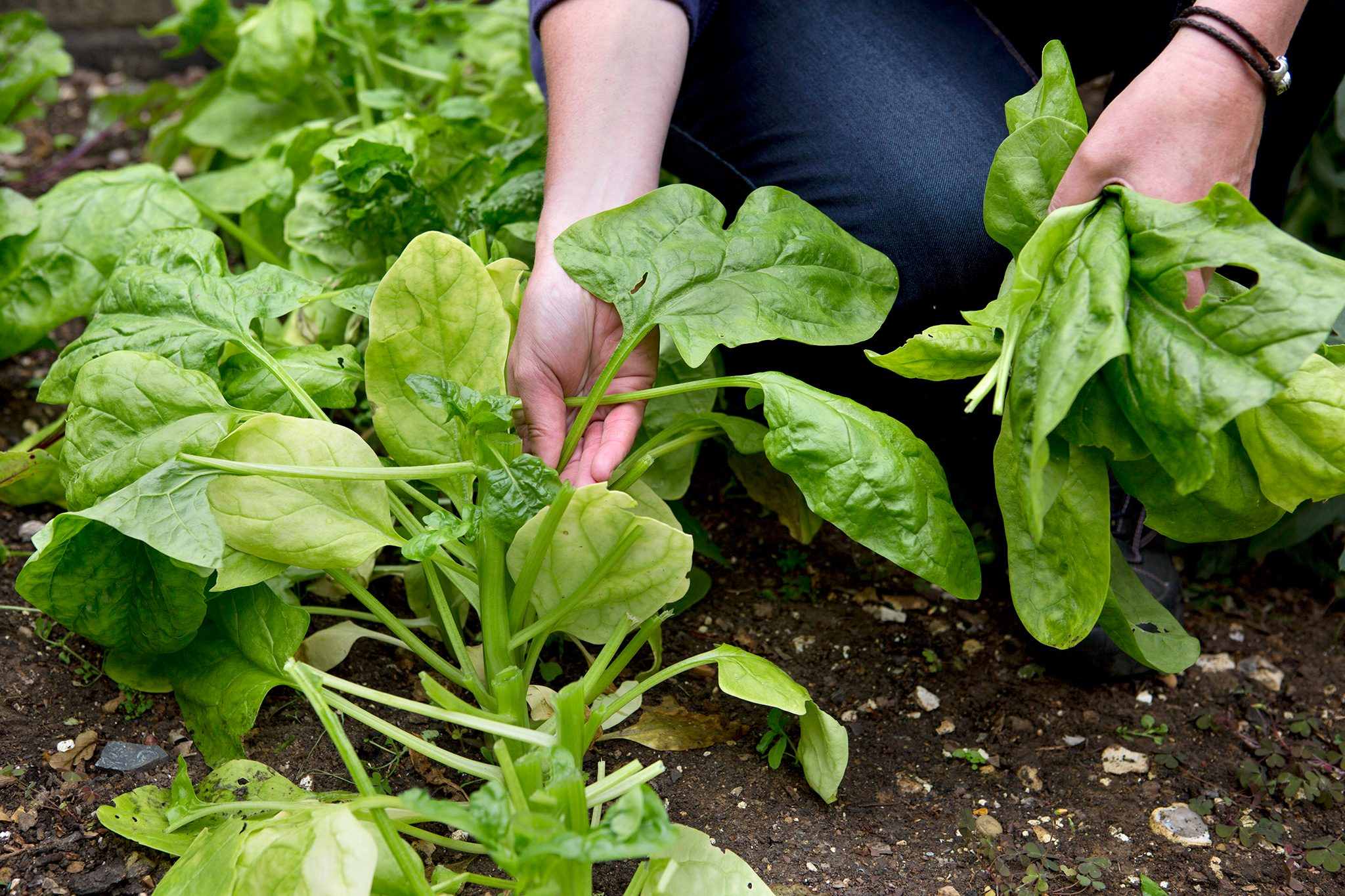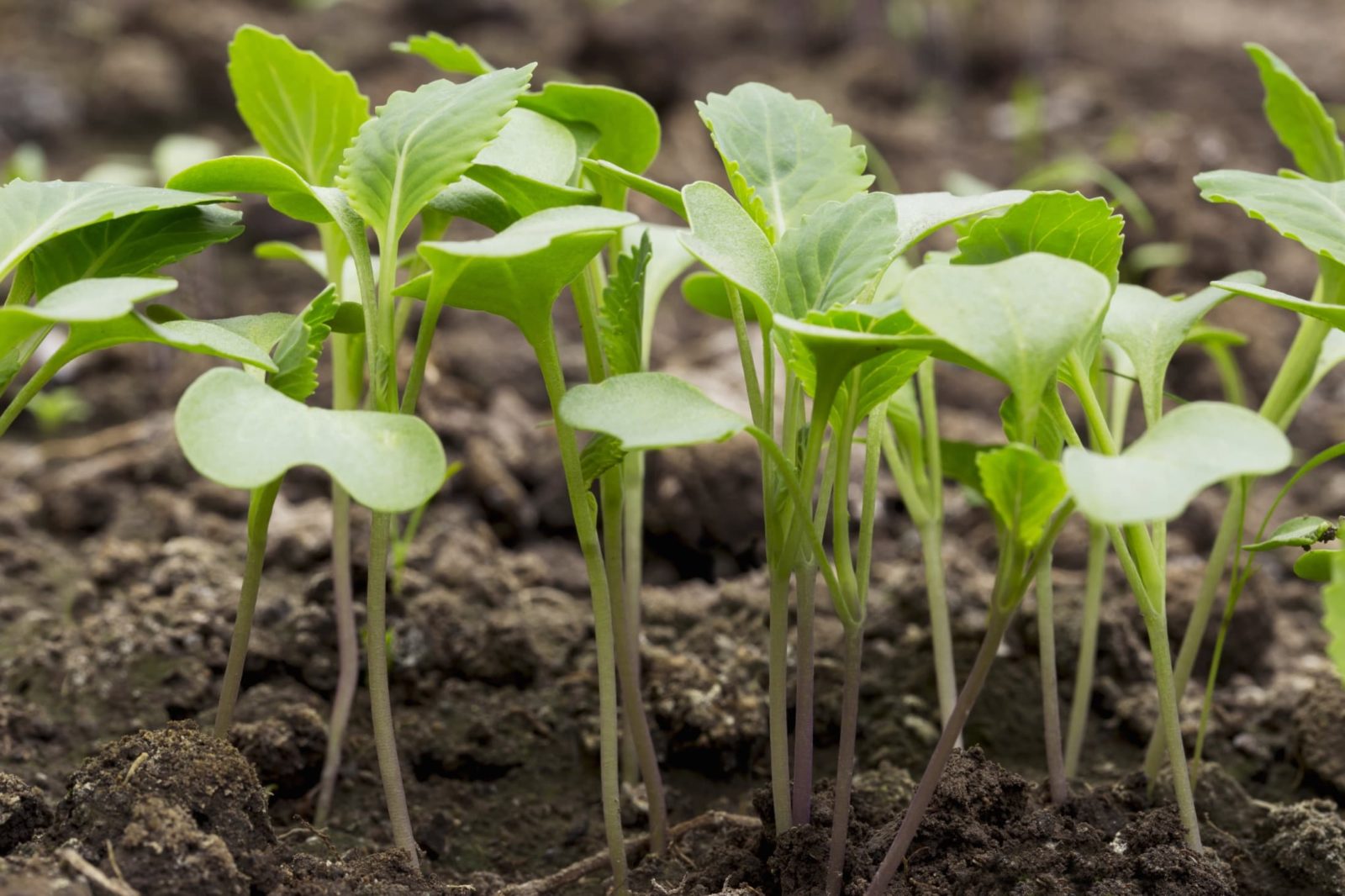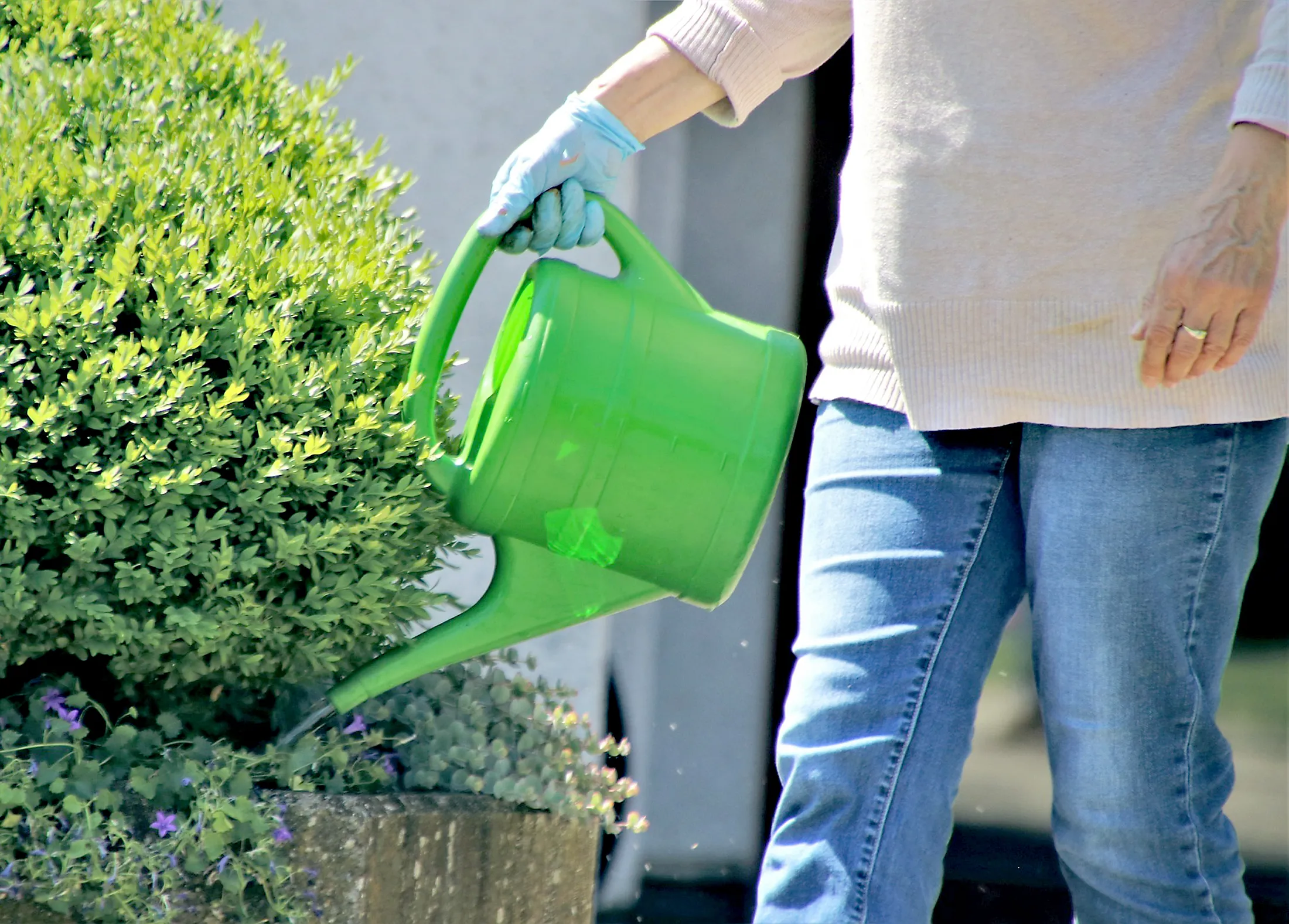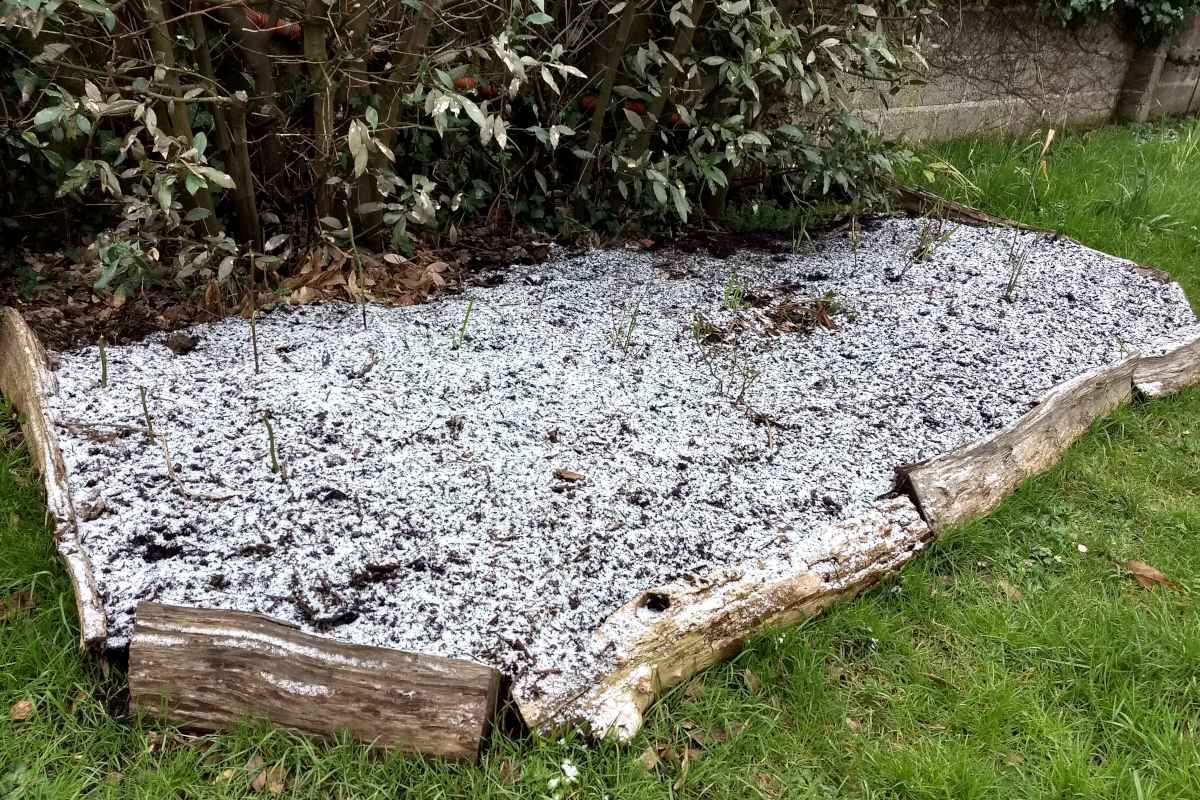Home>Garden Design>Planning Your Garden>How Deep To Plant Boxwood Shrubs
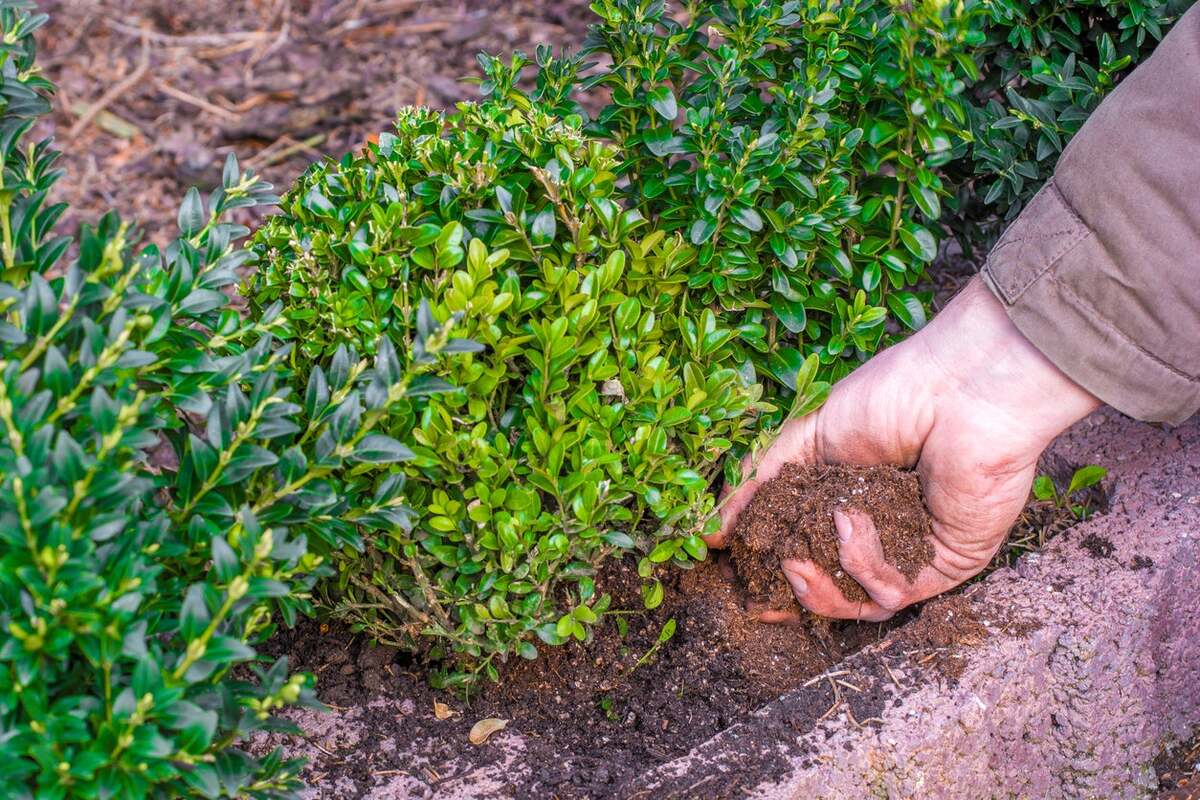

Planning Your Garden
How Deep To Plant Boxwood Shrubs
Modified: February 10, 2024
Learn how deep to plant boxwood shrubs and get expert tips for planning your garden.
(Many of the links in this article redirect to a specific reviewed product. Your purchase of these products through affiliate links helps to generate commission for Chicagolandgardening.com, at no extra cost. Learn more)
Table of Contents
Introduction
Welcome to the wonderful world of gardening! Planning and planting a garden is an exciting endeavor that allows you to create a beautiful and vibrant outdoor space. One important aspect of garden planning is deciding on the placement and depth of your plants, including boxwood shrubs.
Boxwood shrubs are known for their evergreen foliage and versatile nature. Whether you want to create a formal hedge or add structure and greenery to your landscape, boxwood shrubs are a popular choice. To ensure the success and longevity of your boxwood shrubs, it is crucial to plant them at the appropriate depth.
Planting your boxwood shrubs at the correct depth is essential for their overall health and growth. Proper planting depth provides stability, allows the roots to access nutrients and water, and promotes healthy development. In this article, we will explore the factors to consider when determining the ideal planting depth for your boxwood shrubs, as well as other essential tips for successful gardening.
So, grab your gardening gloves and let’s dive into the fascinating world of boxwood shrubs!
Factors to Consider
Before you start planting your boxwood shrubs, there are a few factors to consider to ensure optimal growth and health. These factors will help you determine the ideal planting depth for your specific situation:
- Climate and Hardiness Zone: Different boxwood varieties have different hardiness zones. It is crucial to choose a boxwood cultivar that is suitable for your climate. Consult a hardiness zone map to determine which boxwood varieties will thrive in your area.
- Exposure to Sunlight: Boxwood shrubs can tolerate various levels of sunlight, ranging from full sun to partial shade. Consider the amount of sun your planting area receives throughout the day and choose boxwood varieties that are well-suited to that level of sun exposure.
- Soil Type and Drainage: Boxwood shrubs prefer well-draining soil. Conduct a soil test to determine the soil type and pH level in your planting area. Boxwoods generally thrive in slightly acidic to neutral soil with good drainage.
- Available Space: Take into account the size and width of the mature boxwood shrubs when considering the available space. Allow enough room for proper airflow and avoid overcrowding, which can lead to disease and pest issues.
- Companion Planting: Consider the surrounding plants and their growth habits. Avoid planting boxwood shrubs too close to aggressive or fast-growing plants that may compete for resources.
- Proximity to Structures: If you are planting boxwood shrubs near structures such as buildings or fences, consider leaving adequate space for future growth. This will prevent the shrubs from outgrowing their designated area or causing damage.
By considering these factors, you can assess the unique characteristics of your garden and determine the ideal conditions for planting your boxwood shrubs.
Soil Preparation
Proper soil preparation is crucial for the success of your boxwood shrubs. Before planting, it is essential to create a suitable growing environment for them. Here are some steps to follow when preparing the soil:
- Remove Weeds and Debris: Begin by clearing the planting area of any weeds, rocks, or debris. This will create a clean space for the boxwood shrubs and reduce competition for nutrients.
- Test the Soil: Conduct a soil test to determine the pH level and nutrient content of your soil. Boxwood shrubs prefer slightly acidic to neutral soil with a pH between 6.0 and 7.0. Based on the test results, you may need to amend the soil to adjust the pH or add nutrients.
- Amend the Soil: If necessary, amend the soil with organic matter such as compost or well-rotted manure. This will improve the soil’s structure, drainage, and fertility. Mix the organic matter into the top layers of soil thoroughly.
- Improve Drainage: If your soil has poor drainage, consider incorporating coarse sand or perlite to improve it. Good drainage is essential for preventing root rot and other water-related issues.
- Break Up Compact Soil: If your soil is compacted, use a garden fork or tiller to loosen it up. This will allow the roots of the boxwood shrubs to penetrate easily and access nutrients and water.
- Level the Soil: Ensure that the soil is leveled and even in the planting area. This will promote uniform growth and prevent water pooling around the shrubs.
By taking the time to properly prepare the soil, you are creating an optimal environment for your boxwood shrubs to thrive.
Planting Depth
The planting depth of your boxwood shrubs is a critical factor that directly impacts their root development and overall health. Planting them at the correct depth ensures that the roots have proper access to nutrients, water, and stability. Here are some guidelines to follow when determining the planting depth of your boxwood shrubs:
- Dig the Hole: Dig a hole that is slightly wider and just as deep as the root ball of the boxwood shrub. The width should be enough to accommodate the spread of the roots.
- Examine the Root Ball: Carefully inspect the root ball of the boxwood shrub. Look for any circling or tangled roots and gently straighten them out before planting. This will promote better root growth.
- Position the Shrub: Place the boxwood shrub in the center of the hole, making sure that it is positioned at the same level as the surrounding soil. Avoid planting it too deep or too shallow.
- Backfill the Hole: Gradually backfill the hole with the soil mixture, gently firming it around the roots. Avoid compacting the soil too tightly, as this can hinder root growth.
- Create a Watering Basin: After planting, create a small circular basin around the base of the boxwood shrub. This will help direct water to the roots and prevent runoff.
- Water Thoroughly: Once the shrub is planted, give it a deep watering to settle the soil and provide moisture to the roots. Continue to water regularly, especially during the establishment period.
Remember, planting your boxwood shrubs at the proper depth is essential for their successful growth and development. If planted too deep, the roots may suffocate and rot. Conversely, if planted too shallow, the shrub may not establish a strong root system. Taking the time to ensure the correct planting depth will contribute to the long-term health and beauty of your boxwood shrubs.
Spacing
Proper spacing between boxwood shrubs is crucial for their healthy growth and aesthetic appeal. When determining the spacing, consider the mature size of the shrubs and the desired look for your garden. Here are some guidelines to help you determine the ideal spacing for your boxwood shrubs:
- Mature Size: Research the expected mature size of the boxwood variety you are planting. This will give you an idea of how much space each shrub needs to grow and spread. Leave enough room for the shrubs to reach their full potential without overcrowding.
- Formal Hedge: If you are creating a formal hedge using boxwood shrubs, plant them closer together to achieve a dense and uniform appearance. Spacing of 12-18 inches (30-45 cm) between shrubs is typically recommended for a tight hedge.
- Informal Planting: For a more natural and relaxed look, you can space the boxwood shrubs further apart. Aim for a spacing of 2-3 feet (60-90 cm) between shrubs, allowing ample space for them to grow and fill out.
- Consider Future Growth: Take into account the potential growth of the boxwood shrubs over time. Plan for their branches to reach out and fill the space between them, creating a lush and well-defined shape.
- Account for Other Plants: If you are incorporating other plants or features in your garden, consider their growth habits and spacing requirements. Make sure the boxwood shrubs have enough space to coexist harmoniously with the surrounding plants.
- Measure and Mark: Before planting, use stakes or flags to mark the intended locations of each boxwood shrub. This will help ensure accurate spacing and avoid any guesswork during the planting process.
By spacing your boxwood shrubs appropriately, you allow them to grow and flourish while maintaining a visually pleasing and well-balanced garden design.
Watering
Proper watering is essential for the health and vitality of boxwood shrubs. While they are relatively drought-tolerant once established, consistent and adequate moisture is crucial during their initial establishment period. Here are some watering guidelines to keep your boxwood shrubs happy:
- Watering Frequency: Water your boxwood shrubs deeply once or twice a week during the growing season, especially during dry spells. Avoid frequent shallow watering, as this can lead to shallow root growth and moisture stress.
- Soil Moisture: Check the moisture level of the soil before watering. Stick your finger into the soil about an inch (2.5 cm) deep – if it feels dry, it’s time to water. Aim to keep the soil evenly moist but not waterlogged.
- Watering Techniques: Water at the base of the shrubs, directing the water to the root zone. Avoid overhead watering, as wet foliage can invite disease and fungal issues. Consider using a drip irrigation system or soaker hose for efficient and targeted watering.
- Establishment Period: During the first year after planting, pay extra attention to watering your boxwood shrubs. They are still developing their root system and rely on consistent moisture. Once established, they will require less frequent watering.
- Mulching: Apply a layer of organic mulch, such as wood chips or shredded bark, around the base of the boxwood shrubs. Mulch helps retain moisture, suppresses weeds, and insulates the soil, reducing water evaporation.
- Monitor Weather Conditions: Adjust your watering routine based on weather conditions. Hot and dry periods may require more frequent watering, while cooler and rainy periods may allow for less frequent watering.
Remember, maintaining proper soil moisture is key to the health of your boxwood shrubs. Regular watering, especially during the establishment period, will promote healthy growth and help your shrubs thrive in your garden.
Mulching
Mulching is an essential practice for the care and maintenance of boxwood shrubs. Adding a layer of organic mulch around the base of the shrubs offers numerous benefits for their growth and overall health. Here’s why mulching is important and how to do it effectively:
- Moisture Retention: Mulch helps retain soil moisture by reducing evaporation. It acts as a barrier between the soil and the air, preventing water from escaping quickly. This is particularly beneficial during hot and dry periods when boxwood shrubs may require extra hydration.
- Weed Suppression: A layer of mulch helps suppress the growth of weeds around the boxwood shrubs. It blocks sunlight, inhibiting weed germination and reducing competition for water and nutrients. This allows the shrubs to thrive without the interference of unwanted plant growth.
- Temperature Regulation: Mulch acts as an insulating layer, protecting the soil and the roots of the boxwood shrubs from extreme temperature fluctuations. It keeps the soil cooler in hot weather and warmer in colder conditions, creating a more stable environment for the shrubs’ root systems.
- Soil Enhancement: As the mulch breaks down over time, it enriches the soil by adding organic matter. This enhances soil structure, fertility, and nutrient availability, which is beneficial for the overall health and growth of the boxwood shrubs.
- Visual Appeal: In addition to its practical benefits, mulch also adds aesthetic value to your garden. It creates a neat and uniform appearance, highlighting the boxwood shrubs as focal points in your landscape design.
To effectively mulch your boxwood shrubs, follow these guidelines:
- Choose the Right Mulch: Opt for organic mulch such as wood chips, shredded bark, or compost. These materials decompose over time, adding valuable nutrients to the soil.
- Apply the Mulch: Spread a layer of mulch around the base of the boxwood shrubs, extending it to cover at least a few inches beyond the root zone. Apply the mulch to a depth of 2-4 inches, ensuring it doesn’t touch the stems of the shrubs to prevent excess moisture or rotting.
- Maintain the Mulch: Regularly monitor the depth of the mulch and replenish it as needed. Over time, the mulch will break down, so it’s important to maintain an adequate layer to provide the desired benefits.
- Avoid Piling Against the Trunk: Keep the mulch a few inches away from the trunk of the boxwood shrubs to prevent excess moisture buildup and potential rotting.
By mulching your boxwood shrubs, you not only provide them with the ideal growing conditions but also enhance the overall beauty and health of your garden.
Pruning
Pruning is an essential task in maintaining the health, shape, and overall appearance of your boxwood shrubs. Regular pruning helps promote dense growth, encourages new shoots, and maintains the desired shape and size of the shrubs. Here are some key points to consider when pruning your boxwood shrubs:
- Timing: The best time to prune boxwood shrubs is during late winter or early spring when they are still dormant. Avoid pruning in the fall, as new growth may not have enough time to harden off before winter.
- Tools: Use sharp and clean pruning shears or hedge trimmers to make precise cuts. Disinfect your tools before and after pruning to prevent the spread of diseases.
- Shape and Size: Determine the desired shape and size of your boxwood shrubs before pruning. Consider the growth habit of the specific variety you have and aim to maintain a natural, yet well-maintained appearance.
- Remove Dead or Diseased Wood: Start by removing any dead, damaged, or diseased branches. This will improve the overall health and aesthetics of the shrubs and prevent the spread of diseases or pests.
- Thinning: Thin out the interior of the shrub by selectively removing some branches. This promotes better air circulation and light penetration, reducing the risk of fungal diseases and allowing for more even growth throughout the shrub.
- Shearing: If you desire a formal and well-manicured look, you can shear the outer layers of the boxwood shrubs. Use hedge trimmers or shears to create a neat and uniform appearance. Take care not to shear too deeply into the wood, as this may result in bare and unsightly patches.
- Prune Conservatively: Avoid excessive pruning, as boxwood shrubs may take some time to recover from severe cuts. It is generally recommended to prune no more than one-third of the shrub’s total growth in a single pruning session.
Regular pruning helps maintain the shape and health of your boxwood shrubs, ensuring they remain attractive and vigorous for years to come. Remember to take your time while pruning and step back periodically to assess the shape and balance of the shrub as you work.
Fertilizing
Fertilizing is an important aspect of boxwood shrub care that helps provide essential nutrients for their growth and overall health. While boxwood shrubs are generally low-maintenance, they can benefit from occasional fertilization to ensure optimal vigor and vitality. Here are some guidelines for fertilizing your boxwood shrubs:
- Choose the Right Fertilizer: Select a slow-release or balanced fertilizer specifically formulated for shrubs and trees. Look for a fertilizer with a balanced ratio of nitrogen (N), phosphorus (P), and potassium (K), as well as micronutrients.
- Timing: Apply fertilizer to your boxwood shrubs in early spring, just before new growth emerges. This allows the shrubs to utilize the nutrients as they begin their active growing season.
- Follow the Directions: Read the instructions on the fertilizer packaging carefully and follow the recommended application rates. Avoid over-fertilizing, as it can lead to excessive growth, weak branching, and other issues.
- Apply Evenly: Spread the fertilizer evenly around the base of the boxwood shrubs, extending it slightly beyond the drip line. Use a hand or broadcast spreader for larger areas, or apply by hand for smaller gardens.
- Water After Fertilizing: After applying the fertilizer, water the shrubs thoroughly. This helps distribute the nutrients into the soil and encourages proper uptake by the roots. It also prevents the fertilizer from sitting on the foliage and potentially causing damage.
- Consider Organic Alternatives: If you prefer an organic approach, you can use compost or well-decomposed manure as a natural fertilizer for your boxwood shrubs. Apply a layer of organic matter around the base of the shrubs, similar to mulching, to provide slow-release nutrients.
- Monitor Nutrient Deficiencies: Keep an eye out for signs of nutrient deficiencies, such as yellowing leaves or poor growth. If necessary, conduct a soil test to identify any specific nutrient deficiencies and adjust your fertilization program accordingly.
Remember, boxwood shrubs typically do not require heavy fertilization, as excessive nutrients can lead to soft growth and increased susceptibility to diseases and pests. Following a balanced fertilization schedule will help supply the necessary nutrients and promote the overall health and vitality of your boxwood shrubs.
Common Mistakes to Avoid
When it comes to growing and caring for boxwood shrubs, there are some common mistakes that gardeners should be aware of. By avoiding these pitfalls, you can ensure the health and longevity of your boxwood shrubs. Here are some common mistakes to avoid:
- Improper Planting Depth: Planting boxwood shrubs too deep or too shallow can have detrimental effects on their growth and health. Follow the recommended planting guidelines, ensuring that the shrubs are planted at the appropriate depth.
- Overwatering or Underwatering: Finding the right balance of water is crucial for boxwood shrubs. Avoid overwatering, as too much moisture can lead to root rot, while underwatering can cause stress and hinder growth. Monitor the soil moisture and water accordingly.
- Incorrect Pruning Techniques: Improper pruning can result in misshapen or weakened boxwood shrubs. Follow the proper pruning techniques, such as removing dead or diseased wood, thinning out the interior, and shaping the shrubs carefully.
- Over-Pruning: While pruning is necessary for maintaining the shape and health of boxwood shrubs, over-pruning can weaken the plants. Avoid excessive pruning, as it can deplete the shrubs’ energy reserves and lead to stunted growth.
- Using the Wrong Fertilizer: Using the wrong fertilizer or over-fertilizing can cause nutrient imbalances and affect the overall health of the boxwood shrubs. Choose a well-balanced fertilizer specifically formulated for shrubs and follow the recommended application rates.
- Neglecting Soil Preparation: Poor soil preparation can hinder the growth and establishment of boxwood shrubs. Take the time to prepare the soil properly, ensuring good drainage, nutrients, and organic matter.
- Ignoring Pest and Disease Management: Boxwood shrubs are susceptible to various pests and diseases, such as boxwood leafminer and boxwood blight. Regularly inspect your shrubs for any signs of infestation or disease and take appropriate measures for prevention and control.
- Planting in Inappropriate Conditions: Choosing the wrong location for your boxwood shrubs, such as an area with excessive shade or poor soil conditions, can impact their growth and overall health. Select a suitable site that provides the necessary sunlight, good soil drainage, and proper air circulation.
By avoiding these common mistakes, you can provide the best care for your boxwood shrubs and ensure their success in your garden. Take the time to research and learn about the specific needs of boxwood shrubs to cultivate a thriving and beautiful landscape.
Conclusion
Gardening with boxwood shrubs can be a rewarding and fulfilling experience. These versatile and evergreen plants can add beauty, structure, and elegance to any garden or landscape. By understanding the factors involved in their successful growth and following proper care techniques, you can enjoy healthy and vibrant boxwood shrubs for years to come.
Consider the unique factors of your garden, such as climate, sun exposure, and soil conditions, when planning and planting your boxwood shrubs. Ensure proper soil preparation, including removing weeds and amending the soil if necessary, to create an optimal environment for their growth.
Take care to plant your boxwood shrubs at the correct depth, ensuring the roots have access to nutrients and water. Provide appropriate spacing between shrubs to allow for proper airflow and growth. Regular watering, mulching, pruning, and fertilizing will contribute to their overall health and vitality.
Avoid common mistakes such as improper planting depth, over or under watering, incorrect pruning techniques, and neglecting pest and disease management. By avoiding these pitfalls, you can help your boxwood shrubs thrive and resist potential issues.
Remember, gardening is a dynamic and ongoing process. Regular observation, care, and adjustments are essential for the long-term success of your boxwood shrubs. Stay attentive to their needs, monitor their growth, and make adjustments as necessary to create a beautiful and thriving garden.
So go ahead and embark on your boxwood shrub gardening journey with confidence. With proper planning, care, and attention, you can create a breathtaking garden that showcases the timeless beauty of these remarkable plants.


